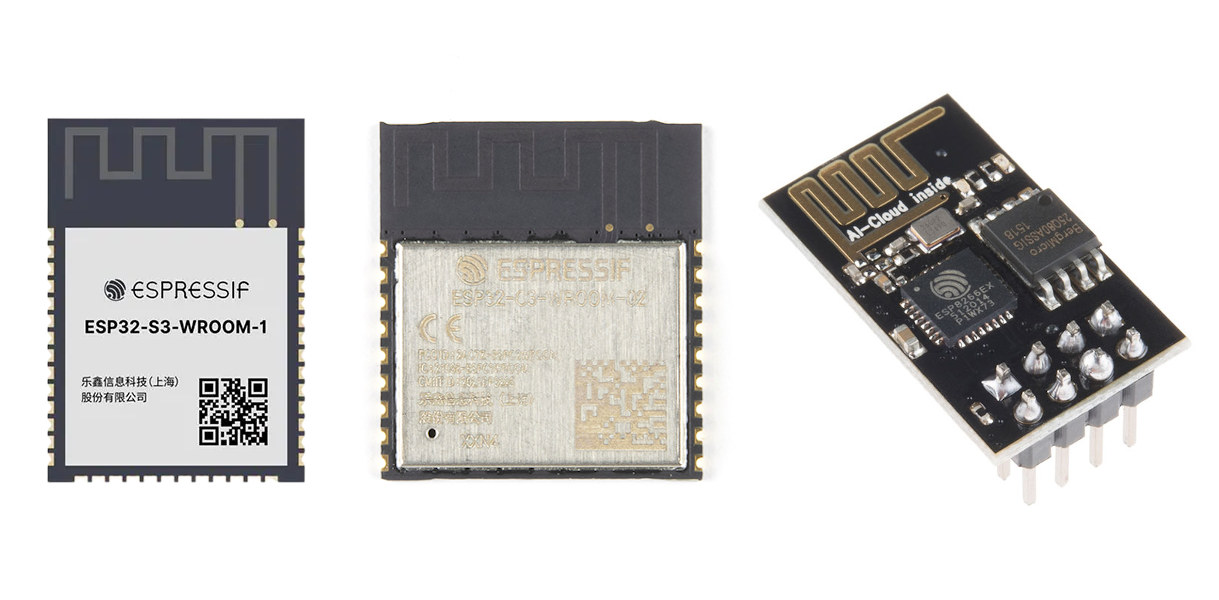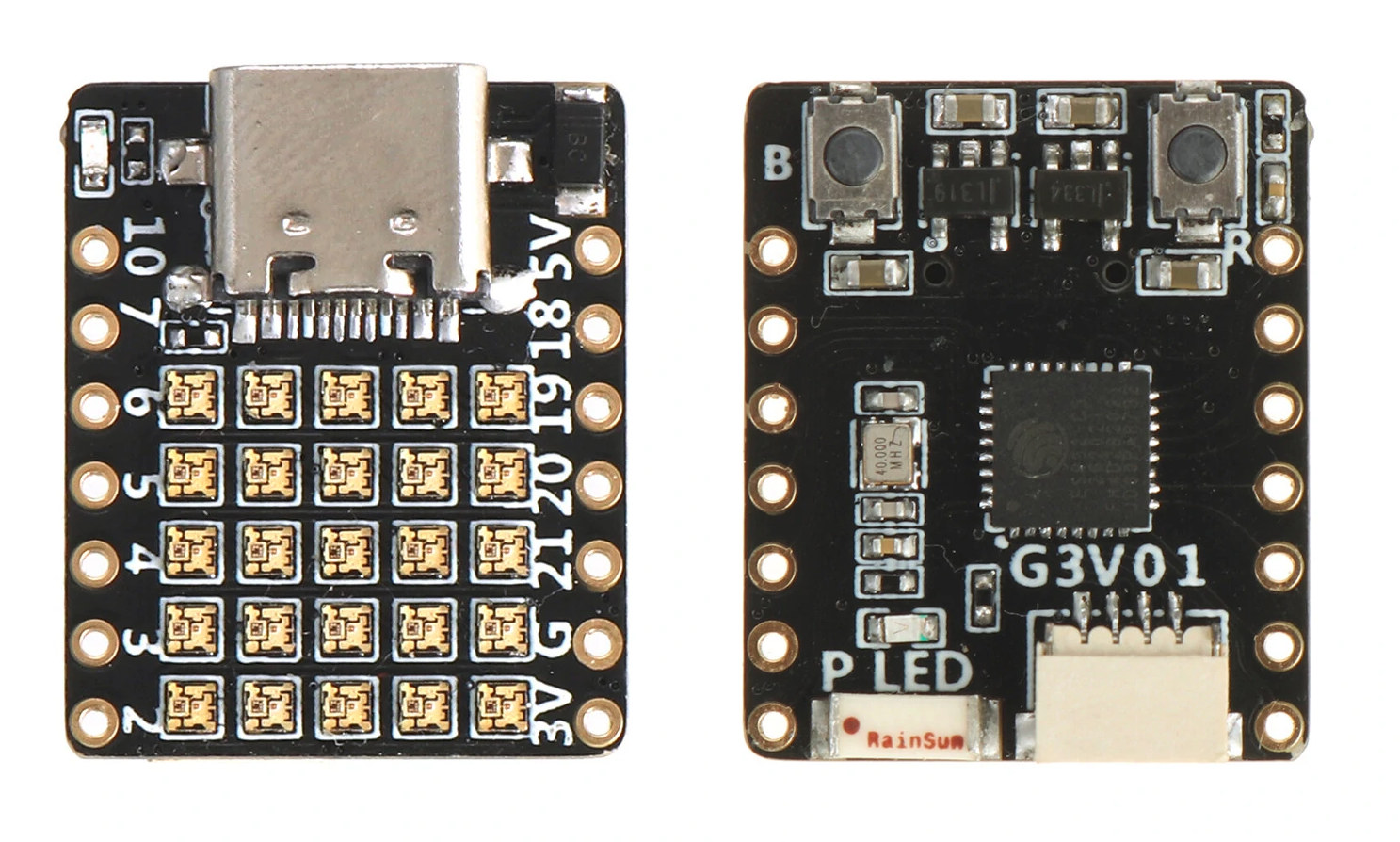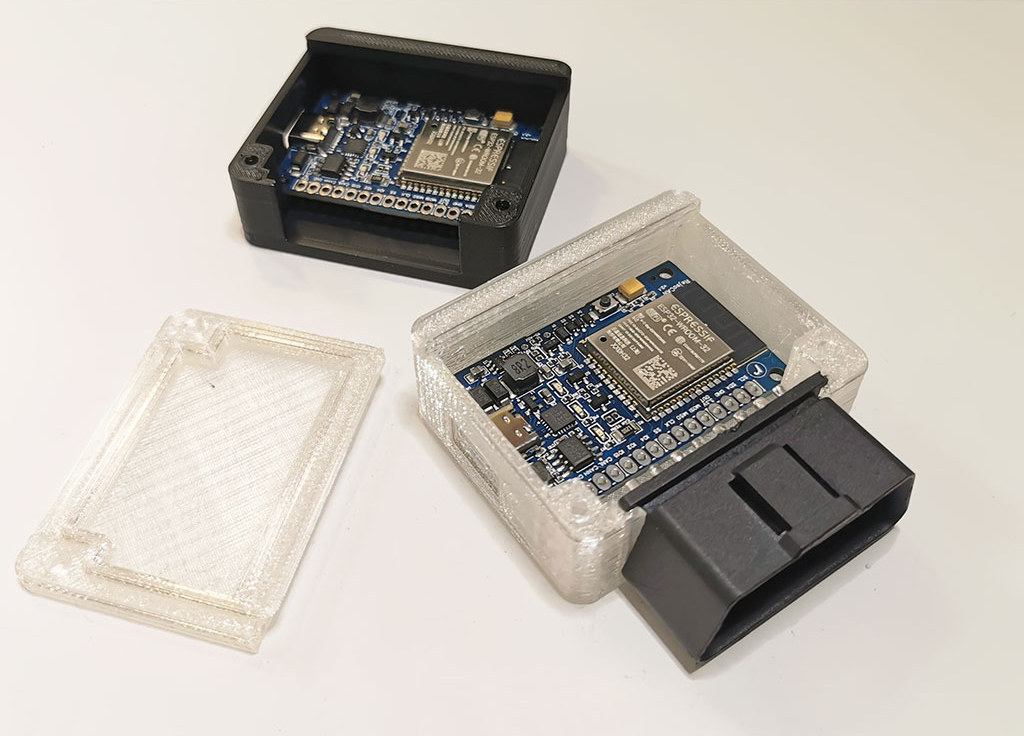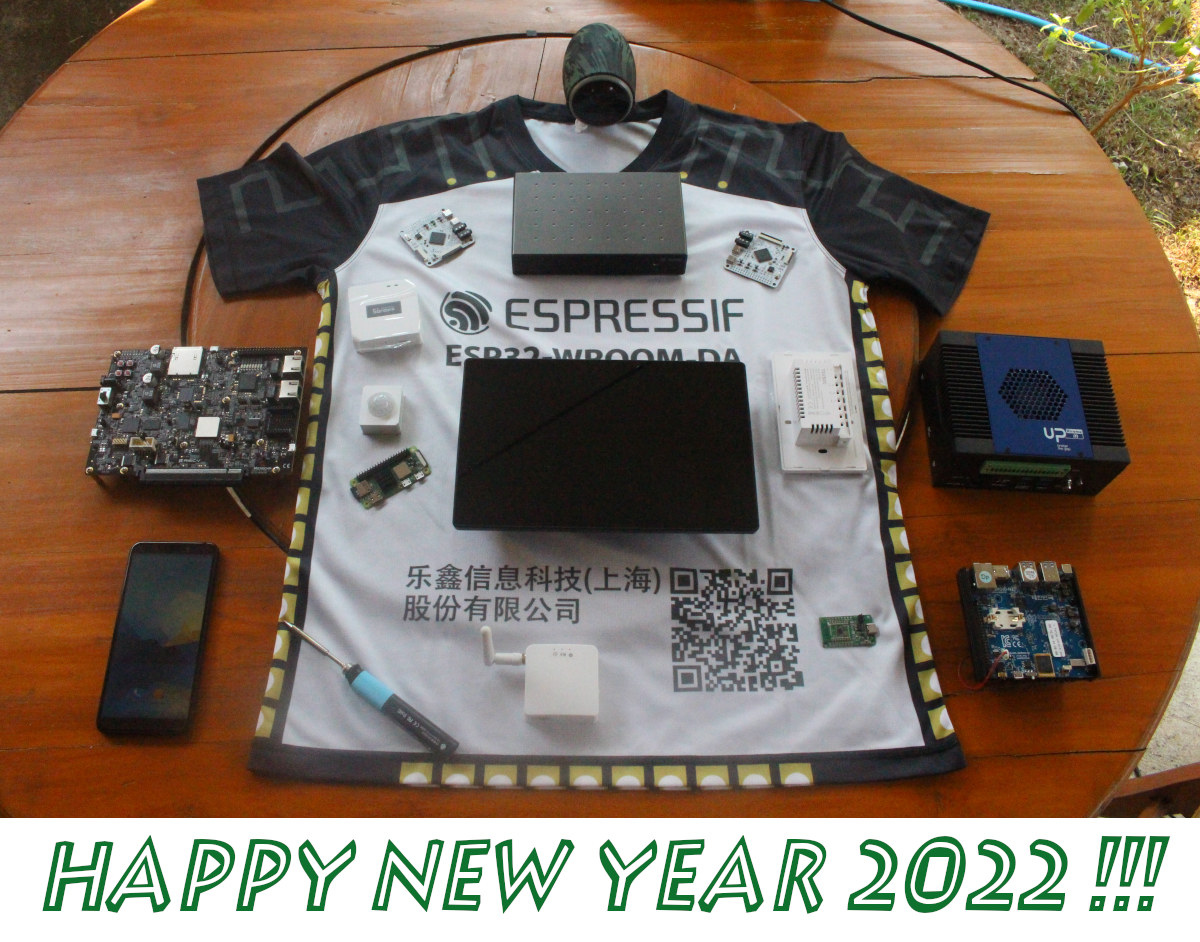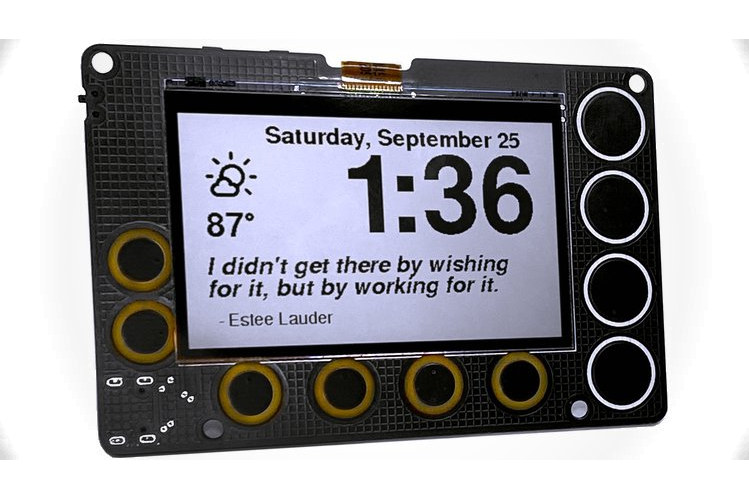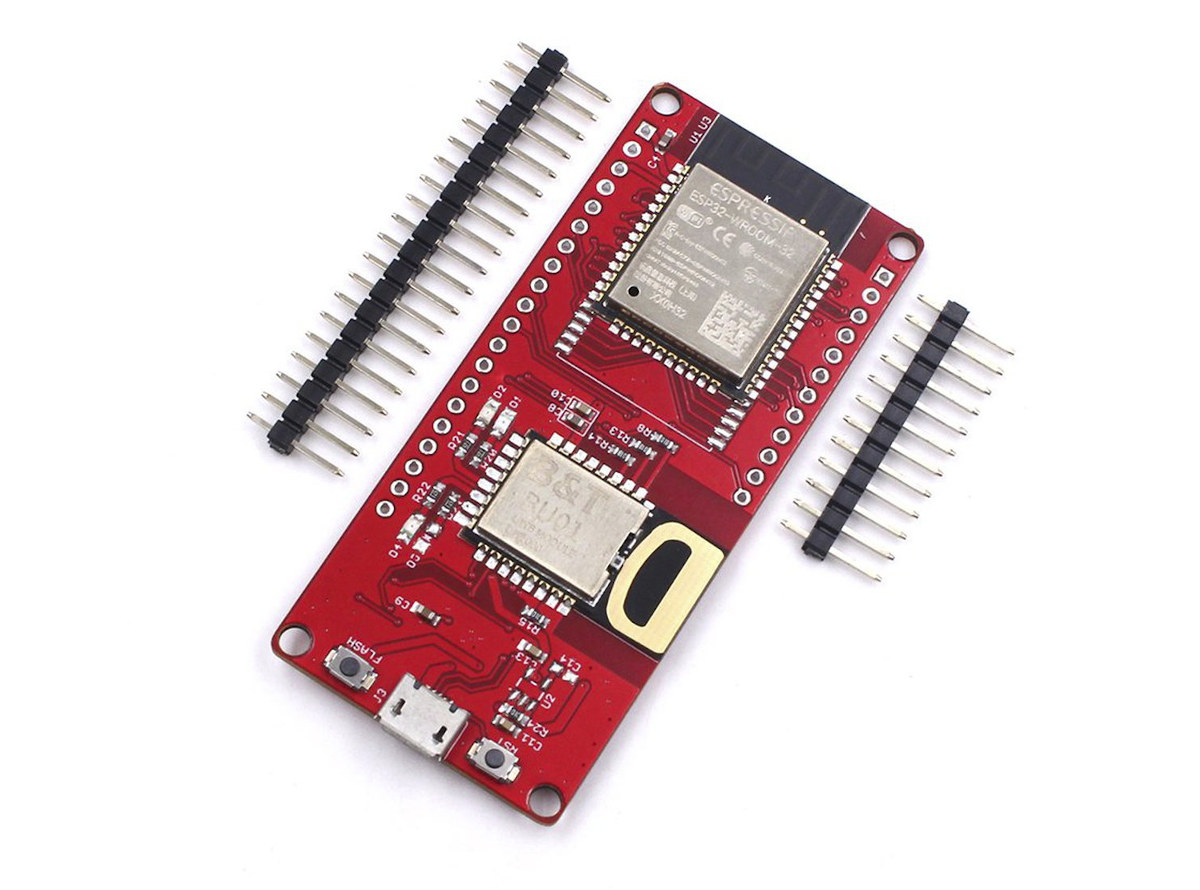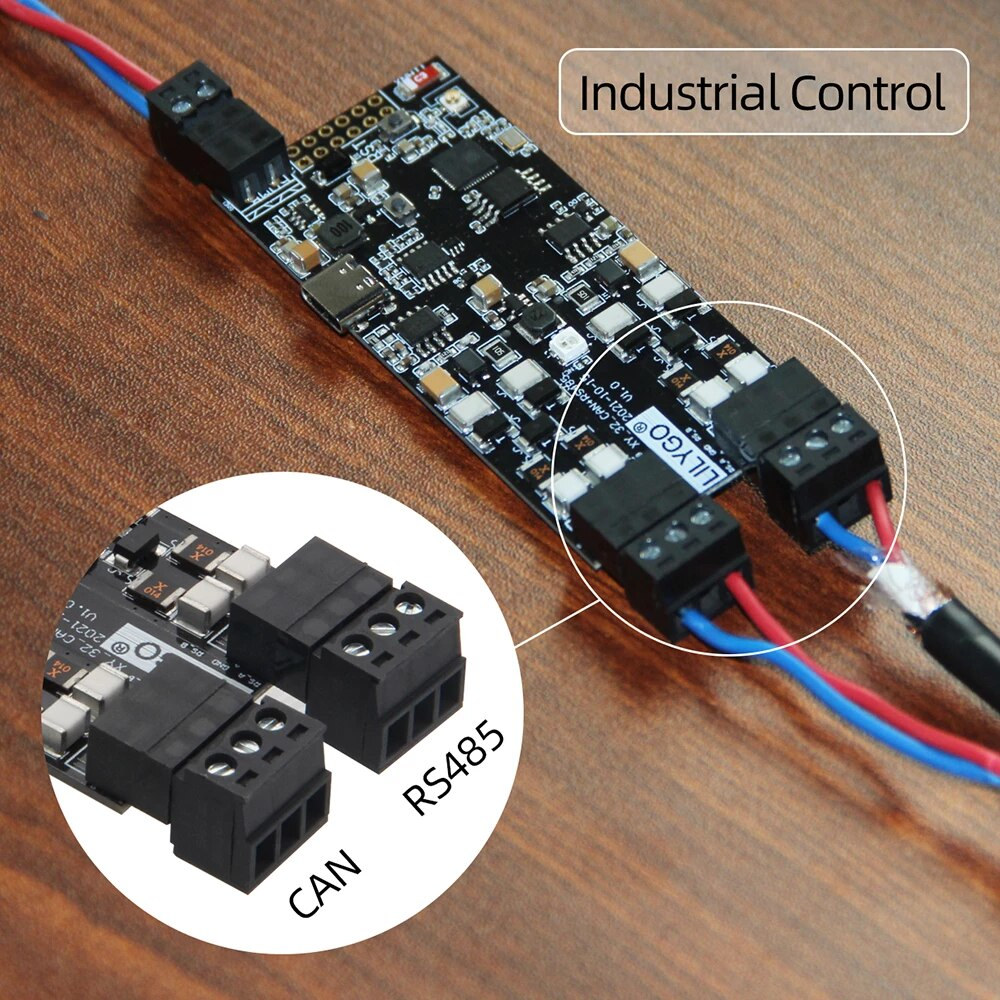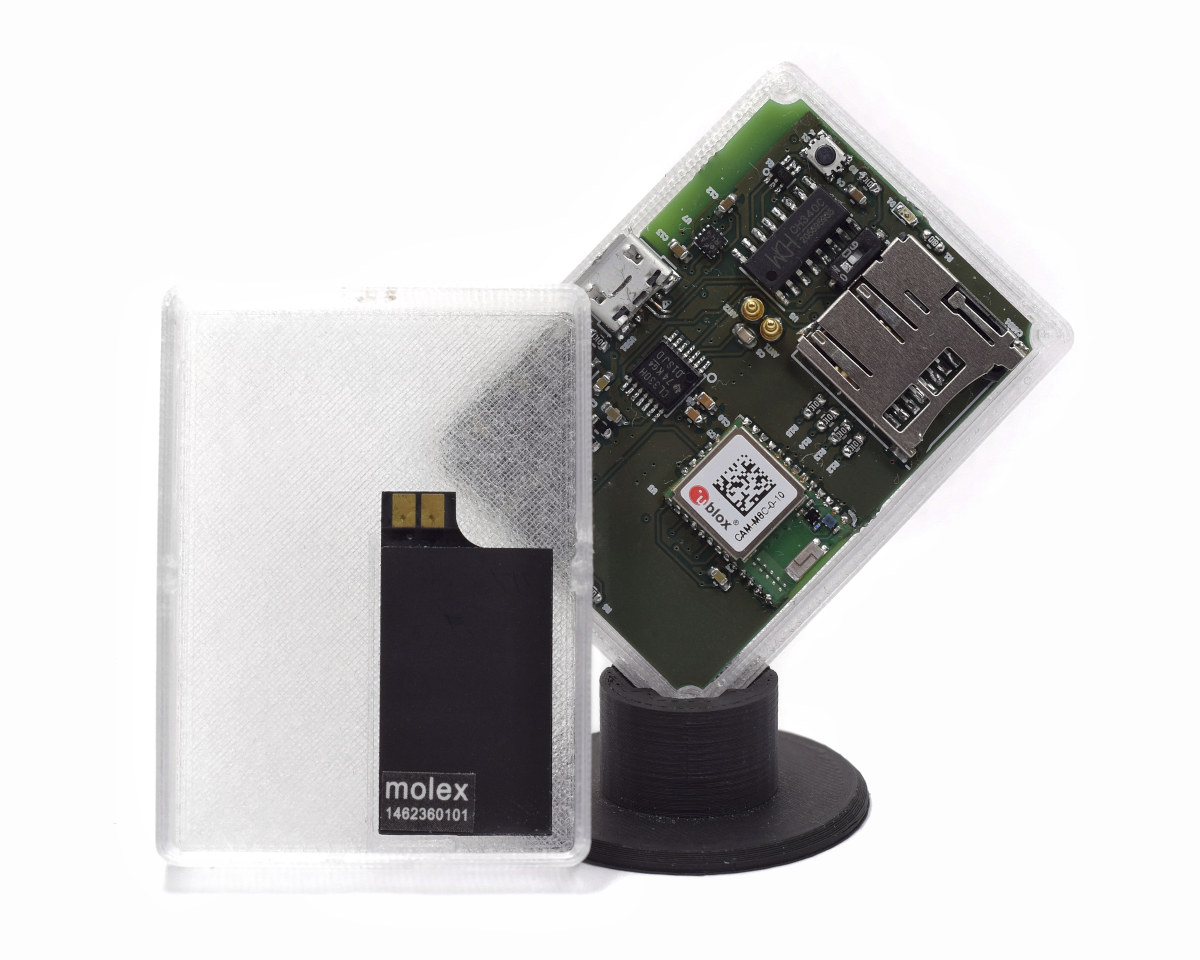The ESP32-S3 chip is equipped with an Xtensa 32-bit LX7 dual-core processor clocked at up to 240 MHz, supports 2.4 GHz Wi-Fi and Bluetooth 5 LE, and boasts AI instructions, as well as a reliable security encryption engine, specially built for the AIoT market. Modules based on the ESP32-S3 processor bring many benefits to designers with support for Bluetooth Long Range mode, plenty of resources with 512 KB SRAM (TCM), 45 programmable GPIO pins, and rich communication interfaces. They can also handle high-speed Octal SPI flash with higher capacities, as well as off-chip PSRAM. So, what are the differences between the new ESP32-S3 modules, and typical ESP32-C3 and ESP8266 modules? Let’s find out. Jean-Luc Aufranc (CNXSoft)Jean-Luc started CNX Software in 2010 as a part-time endeavor, before quitting his job as a software engineering manager, and starting to write daily news, and reviews full time later in 2011. www.cnx-software.com
Board with 25 RGB LEDs is offered with ESP32-C3 or ESP32-Pico-D4
In case you are in need of a tiny WiFI or Bluetooth-connected board with an RGB LED matrix, two have shown up on Banggood with basically the same 25 RGB LED design , except “C3FH4 RGB” board is based on ESP32-C3 RISC-V SoC, while the other, named “PICO D4 RGB“, features ESP32-Pico-D4 SiP (System-in-Package). The boards are cute and the main purpose is probably for decoration/ornament, but I’d imagine if you purchase a few they could also be used as an experimentation/education platform for mesh networking, using the ESP Mesh Development Framework (ESP-MDF) for instance. C3FH4 RGB / PICO D4 RGB board specifications: SoC/SiP C3FH4 RGB board – ESP32-C3FH4 SoC with RISC-V core @ 160 MHz, 4MB flash, 2.4GHz Wi-Fi, and Bluetooth 5 LE with Long-Range support PICO D4 RGB board – ESP32-PICO-D4 system-in-package with ESP32 dual-core Xtensa processor @ 240 MHz, 2.4GHz Wi-Fi and Bluetooth dual-mode, 4MB flash Ceramic […]
ESP32 CAN board fits into OBD-II dongle, supports auto shutdown
RejsaCAN-ESP32 is a small board based on ESP32-WROOM-32 WiFi (and Bluetooth) module with a CAN interface that fits into a 3D printed OBD-II dongle for easy installation into most cars. Magnus Thomé has already published several automotive projects, notably for car racing with a system that checks real-time tire temperature, and he designed RejsaCAN-ESP32 board so that it can be plugged directly into his car with support for 5-15V input voltage, and also includes an auto-shutdown option to prevent battery drain by monitoring the battery voltage in the car. RejsaCAN-ESP32 specifications: Wireless module – ESP32-WROOM-32 module with a dual-core ESP32 processor @ 240 MHz with 2.4 GHz WiFi 4 and Bluetooth 4.2 connectivity, PCB antenna, 32Mbit SPI flash USB – 1x USB-C port for power and programming via CP2104 USB to TTL chip Expansion – 15-pin header with 3x GPIO, SPI, I2C, analog input, PWM or analog output, CAN bus […]
Year 2021 in review – Top 10 posts and statistics
As per tradition, we’ll look back at what happened during the year in the last post, and see what 2022 may have in store, plus the usual statistics from CNX Software website. The biggest story of 2021 has to be the worsening of semiconductors shortages with extremely long lead times, prices of some components going up multiple folds, constant complaints on Twitter about availability and prices. I think I even saw a website, hopefully misconfigured, showing an estimated availability of a specific STM32 MCU in 2037. This also gave rise to opportunities and board redesigns, with MotorComm Ethernet chips replacing some Realtek chips in SBCs such as NanoPi R2C and Orange Pi R1S Plus LTS, and CH9102F showing up as a replacement for CP2104 in some IoT boards. We also got some interesting Arm processors, but sadly the high-expected Rockchip RK3588 got delayed by another year, although it’s getting really […]
Newt 2.7-inch wireless display offers high refresh rate with SHARP’s Memory-in-Pixel (MiP) technology (Crowdfunding)
Newt is a battery-powered, always-on, ESP32-S2 wireless display with a 2.7-inch display leveraging SHARP’s Memory-in-Pixel (MiP) technology to provide an experience similar to E-Ink displays but with a much faster refresh rate. The wireless display can connect to the Internet to retrieve weather, calendars, sports scores, to-do lists, quotes, and whatever you’d like. Since it is powered by an ESP32-S2 microcontroller you can program with the ESP-IDF framework, Arduino, MicroPython, or CircuitPython. Newt display specifications: WiFi module – Espressif ESP32-S2-WROVER module with ESP32-S2 single-core Xtensa LX7 processor @ 240 MHz with 4 MB flash and 2 MB PSRAM Display – 2.7-inch, 240 x 400 pixel SHARP MiP LCD with “high-contrast, high-resolution, low-latency content with ultra-low power consumption”, reflective mode to eliminate the need for a backlight. USB – 1x USB Type-C port for programming, power, and charging Expansion – I2C Qwiik connector Misc Micro Crystal RV-3028-C7 RTC (45nA power consumption) […]
ESP32 UWB board features DW1000 module for accurate indoor positioning
FiRa “Fine Ranging” UWB technology was introduced a few years ago and is now found in devkits and Apple U1 chip. Makerfabs ESP32 UWB board provides another option with Espressif ESP32-WROVER-32 or ESP32-WROOM-32 WiFi & Bluetooth module combined with a Decawave DW1000 module for precision tracking. Makerfabs explains the board acts like a continuously scanning radar that locks onto another device (called Anchor, since it’s usually in a fixed location) and communicates with it to determine the distance between objects by calculating the time of flight (ToF) between devices, or in other words, the roundtrip time of challenge/response packets. ESP32 UWB board specifications: Wireless modules: WiFi & Bluetooth LE – ESP32-WROVER-32 or ESP32-WROOM-32 module with ESP32 dual-core processor @ 240 MHz UWB – B&T BU01 module based on Decawave DW1000 chip; IEEE802.15.4-2011 UWB compliant wireless transceiver module with a precision of 10cm indoors, a data rate of up to 6.8 […]
TTGO T-CAN485 – An ESP32 board with RS485, CAN bus interfaces
LilyGO is regularly bringing ESP32 boards to market for specific applications, and their latest TTGO T-CAN485 connects ESP32 to CAN bus and RS485 industrial control interfaces. The board also takes 5 to 12V power input via a 2-pin terminal, comes with a microSD card for data storage, a USB Type-C port and CH340K serial chip for programming and debugging, plus a 12-pin GPIO header, some buttons, and an RGB LED. TTGO T-CAN485 board specifications: SoC – Espressif System ESP32 dual-core processor @ up to 240 MHz with 2.4 GHz Wi-Fi, Bluetooth 4.2 LE connectivity Storage – 4MB flash, microSD card socket Industrial control interfaces CAN bus via 3-pin terminal block RS485 via 3-pin terminal block Expansion – Unpopulated 12-pin header with 8 GPIOs configurable as UART, SPI, I2C, plus VDD, GND Debugging – USB-C port for serial access via CH340K USB to TTL chip Misc- Reset and Boot buttons, WS2812 […]
Unsurv offline – An ESP32 GNSS receiver board with NFC, accelerometer (Crowdfunding)
Unsurv offline is a compact and lightweight board with ESP32 WiSoC, a GNSS receiver, an accelerometer, and NFC capabilities to help developers/users collect and analyze location data in a privacy-friendly way. Unsurv Technologies initially developed the board to better understand offline video surveillance with OpenStreetMap (OSM) data. It does so by using a database of camera locations from the OSM on the SD card, “counts” surveillance cameras as you walk past them, and you can then transmit data via NFC and visualize it on your smartphone. The accelerometer is used to wake up the board from deep sleep upon detection of motion. The company has now made the board open-source and other applications are also possible. Unsurv offline specifications: Wireless modules TTGO T-micro32 WiFi 4 and Bluetooth 4.2 module based on ESP32-PICO-D4 SiP with dual-core ESP32 processor, 4MB FLASH, ceramic antenna U-blox CAM-M8C (aka u-blox M8) module with concurrent reception […]


